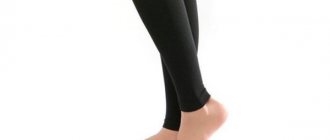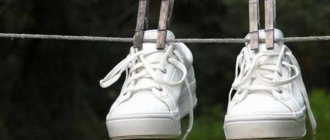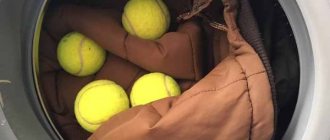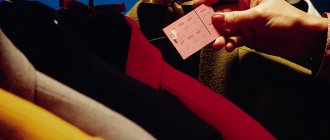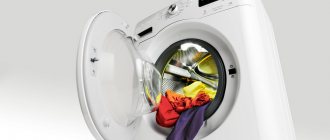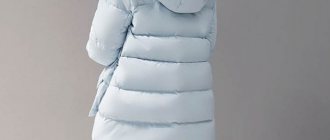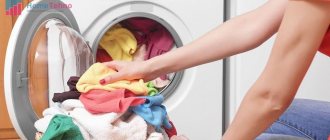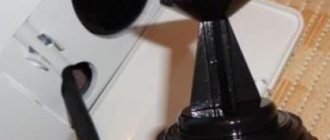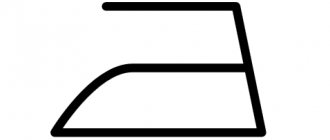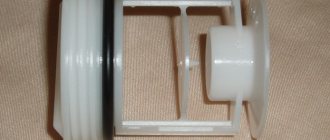Those who have children in the house know very well that the home must have a variety of soft toys that kids love so much. But in addition to the joy they bring to kids, these things cause various troubles for their parents. Since these are the pets that constantly absorb large amounts of dust and dirt. That is why in today’s article we will look at how to wash soft toys in an automatic washing machine, because children are constantly in contact with them, which means that such play items must be kept clean at all times.
And so that the toy does not lose its original appearance and thereby upset the baby, washing must be done correctly.
Preparatory process
Initially, you should divide all the prepared items for cleaning into groups; this is done according to certain types:
- toys with musical inclusions that cannot be removed,
- expensive fabrics for which it is necessary to select a delicate type of washing,
- the presence of various stripes on the outside (buttons, beads, small objects),
- toys made from combined fabrics.
When everything is sorted out, it becomes clear whether to wash your little one’s pets in the washing machine or whether it is better to give preference to other cleaning methods. Of course, other options may take longer than automatic washing, but they can be more effective.
So, you shouldn’t risk your baby’s favorite. Therefore, before you start washing directly, if you have doubts about the filler or the quality of the paint, you can check its durability on a small area of the fabric. In order to do this, you need to prepare alcohol, gauze and a little time. You need to apply alcohol to a small piece of gauze and rub this mixture on a small piece of the toy for a minute.
Naturally, it is better to do this in the most inconspicuous place (under the ear or tail). If there are no stains or other marks on the fabric due to manipulation, you can safely start washing without worrying about the color scheme changing.
If you follow the basic recommendations, you can avoid many negative consequences that ultimately lead to damage to your favorite thing. Currently, the situation with determining the material and filler is much simpler, since this information is generally indicated on all tags.
Is it possible to embroider on plush fabrics?
One of the popular decorations is embroidery. It can be machine or manual. Hand embroidery on plush does not have to form a complex composition. Since it will be quite difficult to do this on fabric with pile. For convenience, you can draw a drawing on thin paper, such as tracing paper, and attach it to a certain area of the canvas. Next, using a hoop, embroider the future design along the contour on paper. After completing the work, carefully remove the paper from under the embroidery.
Things are much simpler with embroidery done using an embroidery machine. It is enough to find a suitable drawing in electronic form and load it into the equipment. Decide on the size and get started. The size of the embroidery will depend on the functionality of the embroidery machine.
Embroidery on minky
Images of angels, pacifiers and booties look great on envelopes for newborn discharge. Various small designs of animals, flowers, etc. are suitable for clothing, larger ones for blankets and rugs.
Hand wash method
According to certain indications, children’s toys can be washed not in a washing machine, but by hand (these recommendations can be seen on the manufacturer’s label). This is done like this:
- water at a temperature of approximately 40 C is collected in a basin specially designated for washing,
- it is necessary to dissolve the prepared washing substance in water,
- put the toys in water, while maximally protecting the parts that are glued from moisture,
- use a brush or sponge to clean more problematic areas,
- rinse the toy (while changing the water several times),
- hang the product on a rope and dry thoroughly.
But you need to remember that washing toys using any chosen method will not be enough, since harmful microorganisms will still remain. In order to rid your pet of germs and other pests, additional methods should be used:
- If the item is small, you can put it in a bag, tie it well and put it in a low-temperature chamber for two days. It should be noted that harmful microorganisms die at low temperatures. If the item is large, you can take it out to the balcony in winter (in the cold),
- For disinfection, use a lamp with ultraviolet radiation, which has a detrimental effect on the development and activity of microbes.
Also, those toys that cannot be washed are often cleaned using vacuum cleaners. For this method you need to use a small nozzle. It is better to keep the power to a minimum in the process. You can also use starch and soda, that is, the toy is placed in a bag and sprinkled with this composition. Then the bag is tied and shaken thoroughly, after which the items are removed and the excess starch is cleaned with a brush.
Attention! There are a lot of methods for caring for plush animals, the main thing is that this care must be carried out constantly. Thus, cleaning your pets must be done at least once every thirty days so that the baby never experiences allergic reactions.
Alternative cleaning methods
Thanks to the introduction of advanced technologies, velor is now used for a variety of purposes. They sew jackets, tracksuits, dresses, tops, pants, and make shoes. Upholstery and covers for pieces of furniture look elegant and rich.
It is important to care for them properly. To dry clean a velor sofa at home, use a vacuum cleaner. Can be used regularly. The process uses a special nozzle. Particular attention is paid to joints and seams, where debris and dust accumulate most.
This is useful to know
To return shiny fibers to their previous shape, you need to know how to properly clean velor. Places that need to be brought back to normal are held over hot steam for 4 minutes. Outerwear is also cleaned in the same way, except for items made of drape velor, which are difficult to clean at home. It is advisable to seek the services of specialist dry cleaners.
Small particles or pet hair often collect on the fabric, especially during shedding. How to clean lint from a velor dress? The result of using a special tape with a sticky base for cleaning things is effective. You can also walk over the surface with a wet palm.
How to restore velor? The crushed pile is lifted using a massage hair brush or a stiff clothes brush. Puffers are also used for small pets. They just need to be used carefully so as not to damage the material. The jacket is scratched against the pile, then moved in the opposite direction.
Selecting a detergent
Babies often sleep with their favorite fluffies, smell them, and in general these things come into contact with the baby’s body, so the detergent for washing them must be chosen thoughtfully and carefully. When choosing, you need to remember that some laundry detergents can cause allergies. This aspect is most important for children who are prone to skin diseases, as well as for those who have very delicate skin.
If you are washing by hand, you can use baby or laundry soap (baby shampoo is also perfect). But, unfortunately, not all stains can be washed by hand; therefore, in case of serious stains, machine washing is used. In this option, baby powder and other laundry detergents with a hypoallergenic composition are selected. To ensure that the toy remains as fluffy as possible, conditioner is additionally used (this way, even hard water will not be scary for your pet).
Attention! Aggressive compounds in modern washing powders can cause not only allergic reactions in babies, but they can also damage the fur of the toy itself. That is, the external material may change its original color, the filler may become confused, and decorative elements may lose part of the coloring composition.
Basic rules for washing in a washing machine
Sequence of manipulations:
- Initially, you need to carefully examine the tags on the toy. It is from this information that it is possible to find out whether the item can be washed in a machine. The fact is that the manufacturer constantly writes this information,
- After a detailed study of the tags, the item is checked for the presence of additional electronic mechanisms. If there are any, they should be removed (since after cleaning they may become inoperative). To do this, an incision is made in the most inconspicuous place for this purpose and the existing mechanism is removed,
- Things are now re-inspected for the presence of additional plastic parts (it is also better to remove them to avoid damage and deformation). After the cleaning process is completed, they can be easily placed in place (using a needle and thread or glue). It’s easier to do everything as described than to then explain to the baby how his pet was left without one eye,
- The baby’s pet is placed in a bag (you can make it yourself from fabric or purchase a ready-made version). In this way, external damage to the toy can be prevented. This will also protect the machine from lint or other problems.
- Referring to the manufacturer's recommendations, you need to choose the most optimal option for washing. It happens that the label is torn, but there is no need to despair. The fact is that it is better to wash almost all toys on a delicate cycle. That is, we choose a temperature of 30 C (this way the baby’s pet will be intact and the washing will be successful). But at the same time, you need to remember that dust mites that are found in toys die only at a temperature of at least 60 C,
- We pay special attention to the fact that when cleaning your pet's crumbs in the machine, it is better not to use the spin function. Thus, you can be sure that the shape will be preserved. It is better to give your preference to a towel. But if it is written on the toy that washing can be done with a spin cycle, then you should turn on the rinse again (this will remove excess powder),
- Again, let’s remember the detergent and note that preference should be given to children’s detergents. And as an additional product - conditioner for children's clothes. This helps preserve the original appearance of the toy,
- If you are worried that the color scheme of your pet may change during the cleaning process, you must additionally add approximately half a teaspoon of citric acid to the detergent used.
In order to be sure that the fluffies are completely clean and that the fabric base contains no chemicals used for washing, it is best to additionally rinse the toy in a bowl of clean water after all manipulations. If you don't want to do it manually, you can simply select the additional rinse mode.
For large pets that simply cannot fit into the machine, it is recommended to clean them manually. This is done with baby shampoo or soap and a rag.
Important! If the color of the fabric has changed significantly (it has changed its original color), it means that it contained a large amount of chemicals that are very unsafe for the child. It is better to protect such a thing from contact with the baby.
How to do it manually?
Hand washing can consist of several parts:
- careful surface cleaning of the material;
- complete wash of the entire item, including stuffing;
- treatment of particularly contaminated areas and stain removal.
In some cases, brushing just the outer fur of your furry friend is sufficient.
To wash by hand you will need:
- a large container in which the entire thing would fit;
- universal detergent in gel form (if the fur of a soft animal is snow-white, you can use a detergent intended for white clothes);
- sponge;
- laundry soap;
- stain remover if there are particularly dirty places;
- water.
Work order:
Fill the container intended for washing with water at a temperature of up to +30ºС. The exception is for products whose label indicates a higher temperature is permitted by the manufacturer.- Detergent is diluted in water.
- If there are dirty areas on the toy, they are soaped with laundry soap using a sponge. The stains are treated with a stain remover, for example, Vanish.
- Wash the toy with a sponge.
- If the goal is a complete wash, including the filling, then you need to squeeze and unclench the product with your hands so that the filling is also washed.
- It is necessary to rinse the item thoroughly, changing the water frequently.
If the toy cannot be wetted entirely, you can wash only the soiled areas, avoiding deep soaking.
Careful surface washing is especially important in cases where the filler is sensitive to moisture. This applies, for example, to anti-stress filler.
This video will tell you about wet cleaning of a large soft toy:
Drying process
We have discussed how to wash soft toys, and now after basic cleaning and additional rinsing, they should be dried well. It is best to do this manually in order not to spoil the soft material. There are also toys with external knitted material. They require a special approach, since they are the ones most susceptible to deformation during drying. The fact is that such things cannot simply be hung on a rope; they should be laid out on a horizontal surface. The most optimal way would be to put an additional towel under the plush animals, after straightening them out and giving them their original shape. All you have to do is wait for it to dry completely.
There is another method to effectively dry plush toys - place them near the radiator. The fact is that the heat emanating from the battery will dry them out much faster and this will in no way affect the external material.
Often, after drying, pellets form on the toy, but there is no need to panic - they can be easily removed with a blade or use a special machine for this.
If hanging drying is allowed, this should be done on a balcony or in a well-ventilated place with constant access to direct sunlight. The fact is that in this way the toy will not only dry, but also ventilate and get rid of foreign odors.
Drying
If everything is now more or less clear about how to wash soft toys in a washing machine, then the question of how to dry them correctly is still open. Teddy bears and bunnies (and their other companions) should be dried in a warm, well-ventilated area. This will help keep the toy fresh. Otherwise, the product may begin to emit an unpleasant damp smell.
Toys made from synthetic materials are best dried on a flat surface, such as the floor. It is better to dry a large item by hanging it on a rope. And for such toys it is better to choose a warm season, ideally to transfer the process to the summer. Shake the toy periodically. By whipping the filler, you can maintain its original shape.
What toys cannot be machine washed?
Unfortunately, not all soft pets can be machine washed. For such exceptions, hand washing or another cleaning method is suitable. There are main signs by which this criterion can be determined:
- the fluffy pet is made from several types of fabrics,
- on the exterior there are small objects that are fixed with glue (eyes, nose, mouth, bows),
- the toy can be easily deformed or change shape due to the fact that it is made of soft material,
- there are plastic materials that are additionally painted with a coloring compound (at high temperatures the paint may peel off),
- Cereals or cotton filler were used as filler,
- the external design has a pile that deteriorates when in contact with water,
- Fluffy has an electronic mechanism that cannot be removed.
If your pet falls under these criteria, you should clean it with a brush or just use a damp cloth. You can additionally use a solution of water and soda.
Caring for toys filled with polystyrene
A toy with such filling is currently considered the safest for a child. The fact is that if you feel such a filler, a person experiences pleasant and at the same time calming sensations. And the form itself will not change its shape and texture for a long time. However, you need to take into account that polystyrene does not tolerate moisture. At the same time, such material is not a breeding ground for harmful microorganisms. Even taking this into account, toys with such filling still collect dust on their outer upholstery, so you need to clean it at least twice a year.
If you are working with a small toy, you can simply place it in a special washing bag (if you don’t have one, then a pillowcase is perfect for such purposes) and only then put it in the washing machine. In this case, you need to remember about the filler and set the speed to 600 or 400. During the washing process, it is better to use a liquid laundry detergent and additional rinsing. Drying is carried out exclusively in a horizontal position.
Why do you wash soft toys?
Stuffed animals need washing because they are dust magnets. Warm room temperature (from 22 degrees), high humidity (from 55%), a large amount of dust - a pleasant atmosphere for the emergence and reproduction of dust mites.
Parasites can cause diseases of the mucous membranes, skin, and respiratory tract. Some forms of disease are so severe that the best option would be to take proactive measures to combat dust in toys.
It is recommended to clean soft pets at least once every 2 weeks, depending on the degree of contamination.
Musical toys - how to care for them
Even taking into account that such pets have mechanisms inside, they, just like the others, should be washed periodically. But before doing this, preliminary preparation is necessary, which is carried out in certain stages:
- find the case in which the electronics are placed,
- make a cut along the seam closest to the mechanism,
- While washing, carefully sew up the incision area.
When all the cleaning steps have been completed and the toy has completely dried, all that remains is to remove the threads that secured the seam, place the case in its original place, and carefully sew up the toy using a thread and needle or a sewing machine. This option is the safest for such products. During the manipulation process, you can immediately replace the batteries.
What to do with items that cannot be washed?
Currently, there are a huge number of toys on sale that cannot be wet processed due to the filler. That is why we will consider a few basic tips that will help you take care of such products:
- Prepare a large plastic bag,
- We place the selected toy in it so that there is still free space left,
- For one unit of product, pour half a glass of baking soda or potato starch into the bag,
- The bag is tied well, after which it should be shaken thoroughly for several minutes,
- At the end of the manipulation, the toy is removed and the soda and remaining contaminants are removed with a brush.
Unfortunately, this method is not suitable for large items, so for such pets a vacuum cleaner with a wide attachment is used (this attachment is most often used for cleaning upholstered furniture).
Getting rid of dust mites
The main problem that soft toys are prone to these days is dust mites. This is ultimately very unpleasant, but you can get rid of these uninvited guests by starting with a certain type of toy.
If there are no contraindications, regarding washing you just need to wash your pet in an automatic machine at a temperature of at least 600C. But after this, the product is thoroughly rinsed and dried. If contact with water is contraindicated, but the size of the toys allows you to place them in the freezer, you must first put the toy in a plastic bag and place it in the cold. On frosty winter days, you can use the balcony for this.
Caring for toys made from natural materials
Let us repeat, first you need to carefully study the composition indicated on the label (if there is none, then this can be done by touch). For example, products made from synthetic materials are not afraid of anything, but natural materials are picky about washing. The fact is that natural material under the influence of high temperatures can shrink, change texture or color.
Therefore, it is best to process toys made from natural materials using the dry method or using a small amount of soap foam. The same cleaning criteria apply to pets that have long lint, since in addition to the spoiled appearance of the toy, you can also end up with a faulty washing machine due to lint getting into the mechanism. Therefore, these products should be protected from machine washing and processed in another way.
Attention! Before washing, be sure to pay attention to the presence of small parts that can also damage the machine. It is better to remove them and then return them to their original place.
So we looked in detail at how to wash your baby’s furry pets. The main thing to remember is that such manipulations must be carried out at least once every six months and then you can be sure that the toys will not harm the health of the baby. There is no need to neglect this, because cleanliness is the key to the health of the whole family.
How to decorate plush fabric products
Products made from plush fabric can be decorated in different ways, depending on its type. You can sew appliques onto clothes, made from the same fabric, but in different colors. You can use materials of a different texture. To do this, before sewing the product, you need:
- Think over the design of the applique, a checkered pattern will do;
- Compose and cut out all the parts involved in the drawing;
- Take a part of the product itself on which the decoration will be sewn;
- Place the applique details and pin them with needles. You can also baste them;
- We sew on a machine or hand-made pattern.
For example, it could be a house, or some kind of animal peeking out of your pocket. Then you need to first sew on the animal, and then sew on the pocket. Appliques are suitable not only for clothing, but also for other types of plush products. Blankets, pillows, blankets are also perfect for such needlework.
Blanket
Applications can also be made from other materials, such as:
- Rhinestones;
- Beads and beads;
- Ready-made stripes;
- Brooches.
House
Interesting! Envelopes and hats can be decorated with bows that you sew yourself. To do this, you can use the same fabric or take a piece of a different color (different texture). The hats can also be supplemented with cat, bear, or bunny ears, which will wonderfully complement the image of the finished product.
